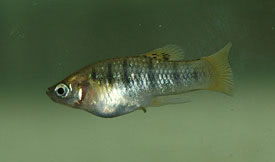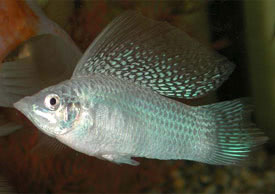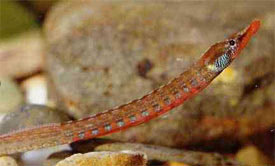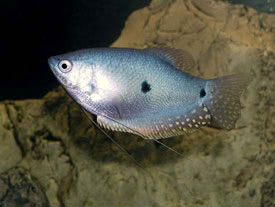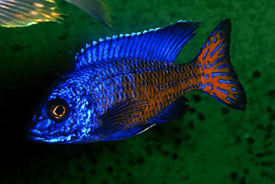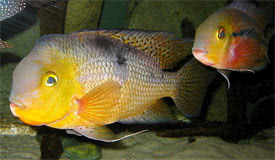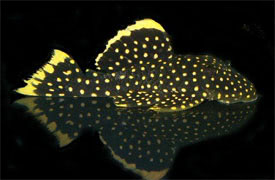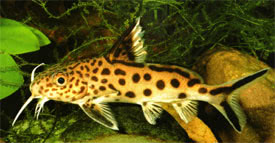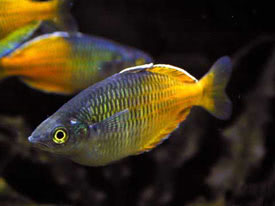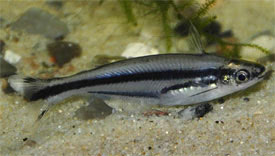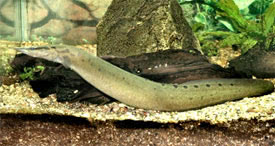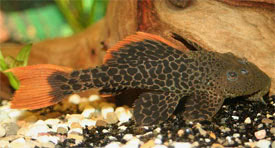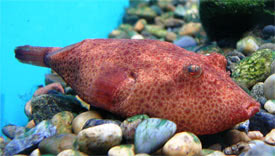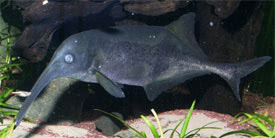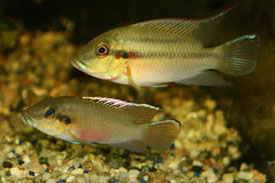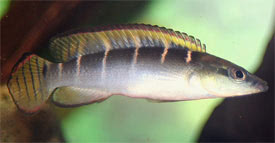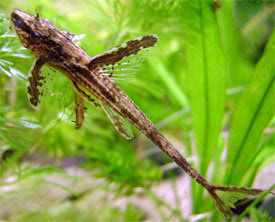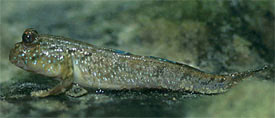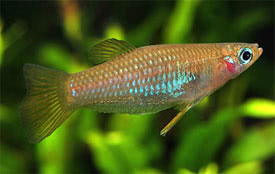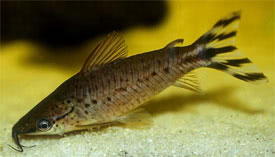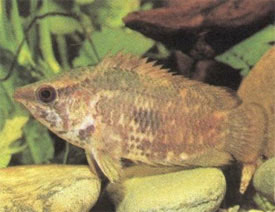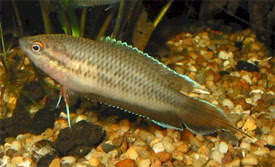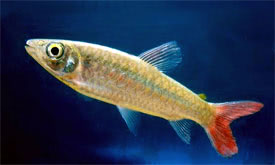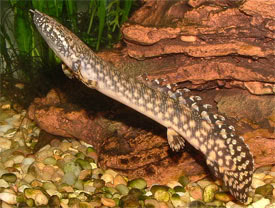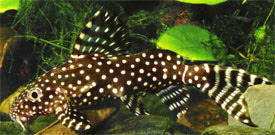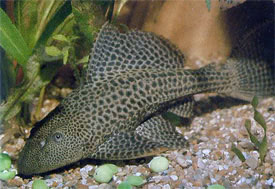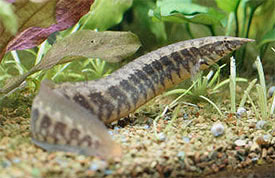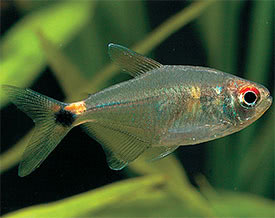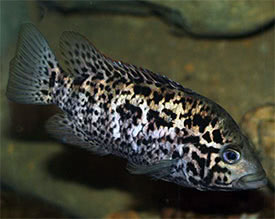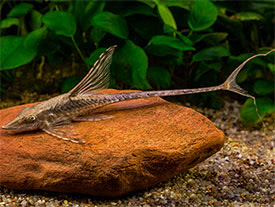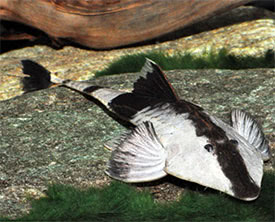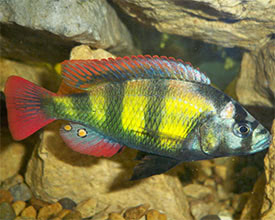
 Magyarul / Hungarian
Magyarul / Hungarian
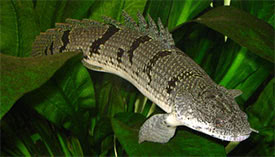

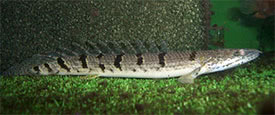
- Scientific name: Polypterus delhezi
- Synonyms: -
- Common name: Armoured bichir, Banded bichir
- Group: Other fishes
- Habitat: Africa; Upper and middle parts of Congo river in the Democratic Republic of Congo (formerly Zaire).
- Size: 35-44 cm
- Biotope: Inhabits in slow-flowing rivers and lakes and even in flooded areas. These are often heavily vegetated.
- Social behavior: Quite peaceful, nocturnal fish. Any small fish in the tank will be eaten, but can be kept with large sized, peaceful species.
- Diet: Carnivorous; it feeds on live and frozen foods such as worms and insect larvae when young, but takes larger food, mainly fish and mussels, when adult.
- Breeding: It is rare, but possible.
- Tank: Minimum 200 litres
- Population: 1 pair for 300 litres
- Decoration: They need a lot of hiding places from stones and roots that big enough to cover them completely. A well planted tank, with sandy substrate, although the fish may tear apart and pull up live plants. The tank must be covered, since they are accurate jumpers.
- Temperature: 24-30 °C
- pH: 6-8
- Hardness: 5-25 NK°
- Lifespan: 8-12 years
Description: Banded bichir is a very hardy, nocturnal species with poor vision, but has an excellent sense of smell to locate food in low lighting conditions. The fish has a gray to olive gray colored elongated body with specks of yellow or green coloration, while the ventral surface tends to be lighter, usually yellowish-white. Polypterus delhezi has 7 to 8 nearly vertical black bars that may vary in thickness between individuals. The dorsal fin is divided into 9 to 12 finlets with spines on its back. All finlets can be hidden in a sac, which allows the fish to swim backwards out of tight holes during hunting. The snake-like head is broad and flat, and the mouth is relatively small for the fish's size. Fins are yellow with brown or black spots. The diamond shaped scales are covered with a coating of a material called ganoine. This material is very tough and helps to prevent water loss through the scales, enabling Polypterids to survive out of water for a few days. It has been reported that Plecostomus-type catfish are not good tank-mates for Polypterus because they tend to attach to the scales of the bichir and damage them. The pectoral fins of Banded bichir resemble a human hand, and these allow the fish to move on the ground. This fish also has a primitive pair of lungs beside the normal gills, which enabling it to survive out of water for a short time, and this fish may actually drown if it is denied access to atmospheric air, as they will frequently come to the surface of the aquarium to gulp air. Most of the Banded bichir available in the aquarium trade are wild caught specimens, so it is wise to quarantine them for a few weeks as they may come in carrying infections or parasites. Keep in mind when housing this fish, that they become quite large and the base area of the aquarium is more important than its height.
Males have larger and thicker anal fin than females. It is possible to breed Polypterus delhezi in aquarium, however details are poorly documented. Armoured bichir breeds during the rainy season in nature, when the water temperature and chemistry changes and this induce the spawning behaviour of the fish. To breed this fish, a large tank is required with soft, slightly acidic water. As Polypterus delhezi is an egg scatterer, the aquarium should be densely planted. During spawning the male receives the eggs from the female by creating a pocket like place with its anal and caudal fins, and fertilize them. After fertilization the male scatters them in the aquarium. At this point, the adult fish should be removed as they may predate upon the eggs. The eggs hatch in 3-4 days, and the fry become free-swimming after another 3 days. The fry can be fed with brine shrimp nauplii, but as they are not moving a lot in the tank, be sure that they are well fed. Very young Bichirs have prominent external gills very similar in appearance to those of some young salamanders, but these gills are lost as the individual matures.








